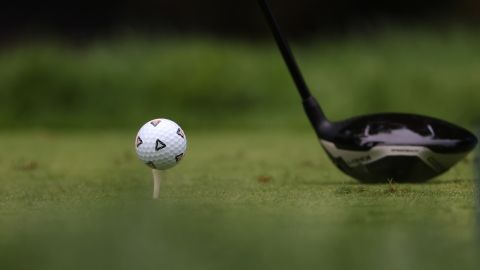Editor’s Note: This article appeared in the November issue of Golf Digest magazine.
CNN
—
Please don’t take offense to this statement of fact, but public-course golfers tend to nudge their golf balls to a better lie more often than private-course players do. I consider myself somewhat of an authority on this subject because I’ve played half my life at public courses and the other half at private clubs.
It’s not a moral judgment. Publinxers are just as honest, ethical and serious about the rules of life as anyone, but the natural convention at your average public course is such that conditions allow for The Nudge. You know what I mean: the gentle prod with a clubhead just a few inches to a slightly upgraded patch of turf. No harm, no foul.
Jack Nicklaus has always argued that the rules should let you roll your ball out of a divot hole. The muny course I grew up on was one giant divot hole. We simply codified “Winter Rules” year-round. When betting big money, we insisted on “playing the ball down” – and if you drove it into the woods, you had to keep clapping your hands until you hit the next shot.
Bobby Jones used to say there were three kinds of golf: Everyday golf, competitive golf and championship golf. The first is like walking a crack in the sidewalk. The second is like walking a tightrope six feet above the floor. “Championship golf is a high wire, and they take away the net,” he said. Most golfers I know walk on solid ground and have only a nodding acquaintance with the rules.
What do I mean? My top 10 rules we choose to ignore in everyday golf but wouldn’t if we were playing in something important like the US Open or even a club championship, which thankfully most of us never do, include:
Three minutes is allowed by the rules, but my opponents search for 10 minutes and then really start looking. My third-favorite rules official David Fay says, “I’m a one-minute guy. If I can’t find it in one minute, screw it.”
Especially in fall golf, if you lose your ball in the leaves, no penalty, just drop one where you think it should be. You can tie but can’t win the hole. Named after the esteemed Dave Anderson, the late New York Times sports columnist who had a great waggle.
Invented on the first tee at Winged Foot, a member named Mulligan always required a second drive to find the fairway, and it spread as common practice everywhere.

Legal in match play but widely applied in stroke-play club tournaments. What starts as “no gimmes” on the first few holes becomes “inside the leather” by the turn and three-and four-footers when you’ve shot yourself out of it. A guy I know as Pelé goes immediately to Stage 3.
It’s not a rule of golf, but if you have a handicap, you’re expected to post every score to maintain an accurate handicap. Vanity players post only their low scores, sandbaggers only the high ones.
My buddies laughed when Wesley Bryan got penalized four strokes for accidentally having two 7-irons in his bag at a PGA Tour Monday qualifier. I’ve seen guys with more than 14 headcovers.

What’d ya hit? Some guys take a survey before making a club selection on par 3s.
Moving your ball from a tree root—or even a tree trunk—without penalty might be a sensible rule. Same with cleaning mud off your ball in the fairway. If you remove a loose impediment, and the ball moves, disregard the penalty. Dropping incorrectly on the golf-hole side of a paved cartpath instead of the actual “nearest point of relief” is acceptable. So is taking relief from immovable objects like irrigation boxes as “mental interference,” as well as disregarding the difference between red and yellow stakes and taking the more favorable drop from water hazards as if they’re all lateral (red).
It’s legal now if the local rule is observed, but we’ve been doing it for years, only you’re hitting your fourth stroke. My pals look at OB as a water hazard, drop and hit 3. It saves going back to the tee and slowing play.

You mean that’s against the rules?
My second-favorite rules official was Frank Hannigan, the executive director of the USGA, 1983-’88. When Denis Watson was hit with two penalty strokes for waiting more than 10 seconds for his ball teetering on the edge of the hole to fall, the ruling cost him the 1985 US Open (he lost by one stroke). I asked Hannigan what he would have done under the circumstances. He said, “I’d have made sure I was standing where I couldn’t see what was happening.”
.